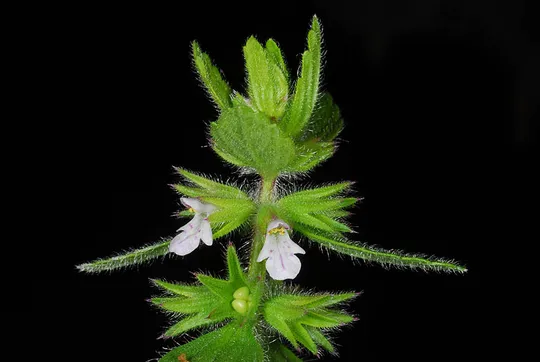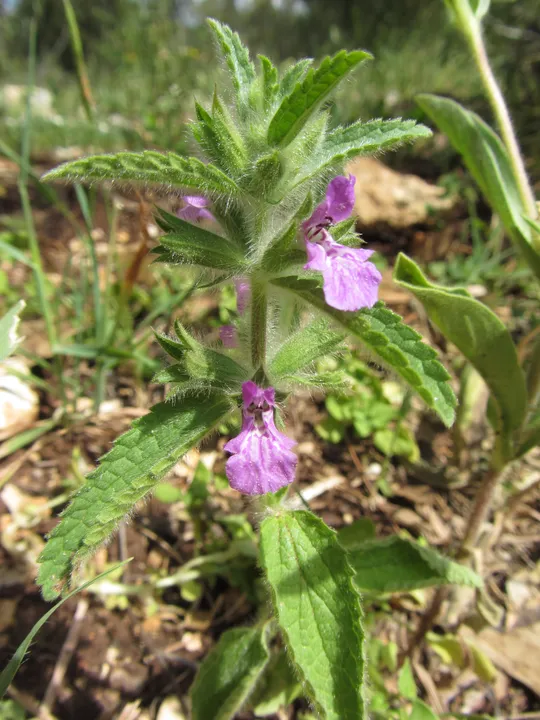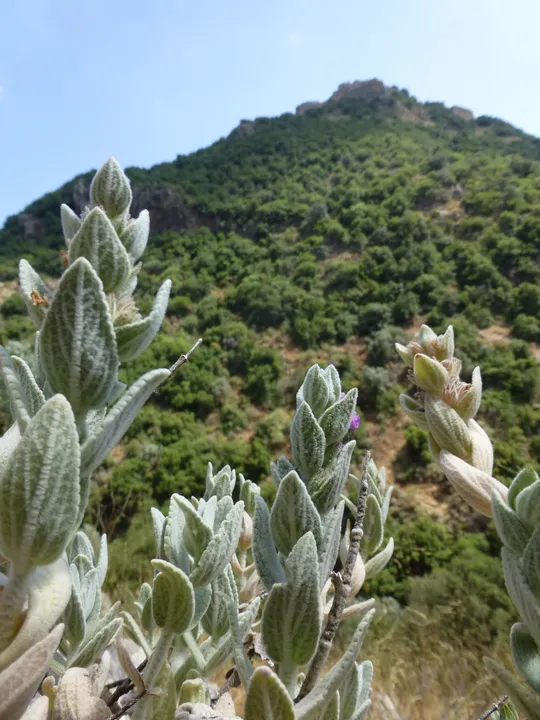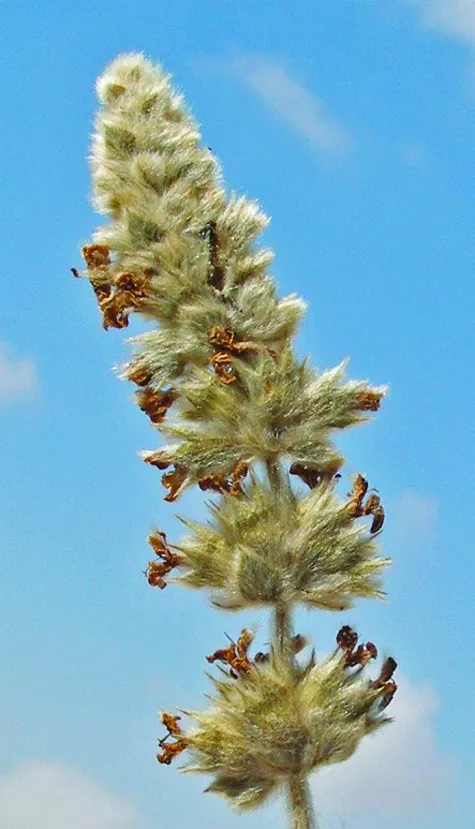Stachys spectabilis
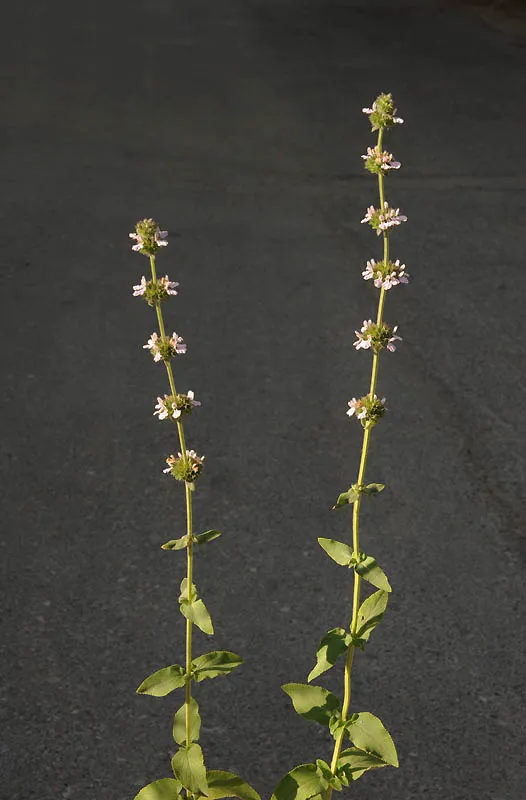
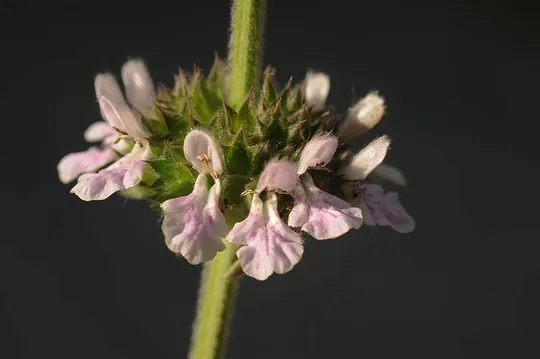
In Israel Stachys spectabilis grows only in the Dan Valley, in the northern part of the Hula Valley. Previously, a large permanent population grew in the area between the Nuhela Springs and Tel-Dan. Specimens were also found in Dafna, and the banks of the Hatsbani Stream. S. spectabilis was found in 1940 in Kfar Gil’adi (the source of the notation in the Flora – "grows in the Upper Galilee") and in 1967 in Botmia on the Golan. In the survey of water bodies conducted in 1974 by the Nature Reserves Authority special emphasis was placed on this species and it was found only in the Dan Valley in Israel.
In 2000 and 2003, botanical tours were conducted in Nuhela Springs but S. spectabilis was not found.
On stream banks and canals in which clear water flows, in sunny places. Usually grows on the border between grain fields and raspberry stands.
Stachys spectabilis belongs to major group of Stachys herbaceous perennials, some of which grow in aquatic habitats and others on dry slopes and on rocks (e.g. S. ehrenbergii, S. viticina, S. longispicata, S. libanotica, S. distans). Father Mouterde, who specialized in the flora of Syria and Lebanon, and often visited the Banias area (before 1967), mentions a species of Stachys from the Banias, which he could not identify. Professor Feinbrun, who first classified the species in Israel, clearly distinguishes it from S. longispicata, (by the length of the calyx), however the Turkish Flora emphasizes that they are close and differ only in the number of flowers per whorl. It is possible that S. longispicata is closer to S. viticina and not to S. spectabilis, which complicates the taxonomic issue. The absence of S. spectabilis from Syria and Lebanon raises doubts about the accuracy of the scientific name, but there is no doubt that this is an independent taxon and separate from the other Stachys species in Israel, and that it is endangered (or possibly already extinct)..
Stachys spectabilis may be extinct in Israel. In the only area where it grows, in the Hula Valley, no systematic plant survey was conducted and the rare plant survey of the Nature Reserves Authority and of ROTEM – the Israel Plants Information Center – has not reached this region. Therefore, we have no confirmed information as to whether the species is extinct in the Hula Valley, the Golan streams and from the entire country.
A comprehensive survey should be conducted to try to locate Stachys spectabilis. Unlike other red plants, where populations can be transferred from other sites in Israel or from neighboring countries, S. spectabilis does not grow in Syria and in Lebanon, and so it is important to go back and to locate it. When populations are detected, they should be used to populate well-lit areas with running water in the reserves: Tel Dan, Snir Stream or Nuhela Springs.
Its distribution limited to the northern Middle East: northern and eastern Turkey, the Amanos Mountains in southern Turkey, northwestern and central Iran and the Caucasus. The species is not found in Lebanon and Syria.
Stachys spectabilis is a perennial herbaceous species growing on river banks and freshwater canals. In Israel, it grows only in the Dan Valley in the northern Hula Valley, and may have recently become extinct. The Dan Valley is southernmost point in the species' range. In the past fifty years Israel's water bodies have decreased drastically, in particular the natural water bodies in the Hula Valley. S. spectabilis, which once grew in the Dan Stream and the Nuhela Springs, has disappeared and may be extinct.
Current Occupancy Map
| 1000 squre meter pixel | 5000 squre meter pixel | 10000 squre meter pixel | |
|---|---|---|---|
| number of observations | 0 | 0 | 0 |
| in total pixels | 0 | 0 | 0 |
| Family | Lamiaceae |
| Classification | On the endangered species list |
| Ecosystem | Mediterranean humid |
| Chorotype | Southern Euro-Siberian |
| Conservation Site | Nuhela Springs |
| Rarity |
1
5
6
|
|---|---|
| Vulnerability |
0
3
4
|
| Attractiveness |
0
0
4
|
| Endemism |
0
0
4
|
| Red number |
1
4.7
10
|
| Peripherality | 0 |
| IUCN category | DD EW EX LC CR EN VU NT |
| Threat Definition according to the red book | Endangered |
 Based on:
Based on:
